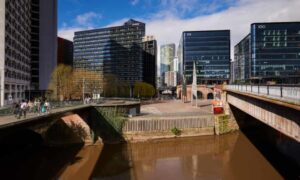
The new Labour government faces a massive task in seeking to repair the UK’s degraded environment and fight the climate crisis. After 14 years in which the Conservative government ducked many of the big decisions, deliberately underfunded regulators, picked culture wars rather than formulated policy, and set out target after target without putting in place the measures needed to meet them, the UK is in a poor state on nearly all green fronts.
Here are the top green issues that Keir Starmer, as well as the energy security and net zero secretary, Ed Miliband, and the environment, food and rural affairs secretary, Steve Reed, will have in their in-trays.
Labour’s headline green pledge is to make the UK into a “clean energy superpower” by decarbonising electricity by 2030. Experts agree this will be at the furthest reaches of possibility – but even if Labour fails to meet the target entirely, getting a substantial way there will be a major achievement.
It will require boosting renewable energy: lifting the ban on onshore windfarms in England that has stymied this cheap form of energy, which Labour announced on Monday; boosting offshore wind when the next round of auctions comes up next month; greenlighting new solar farms; helping households to use less energy; and a programme to encourage businesses to step up their efficiency and adopt new processes.
Most of this is uncontroversial, though changes to the planning rules may be more difficult to put into practice than they were to put in a manifesto. By far the trickiest problem is likely to be the poor state of the UK’s electricity grid infrastructure. It can take a decade just to get a connection to the grid for a new renewable energy facility.
The private sector company in charge, National Grid, has promised about £30bn of investment in the UK over the next five years, but that is at the lowest end of what is likely to be needed. Labour’s new GB Energy, a publicly owned company and investor, will need to get started quickly on this task, possibly by finding ways to generate new private sector investment.
